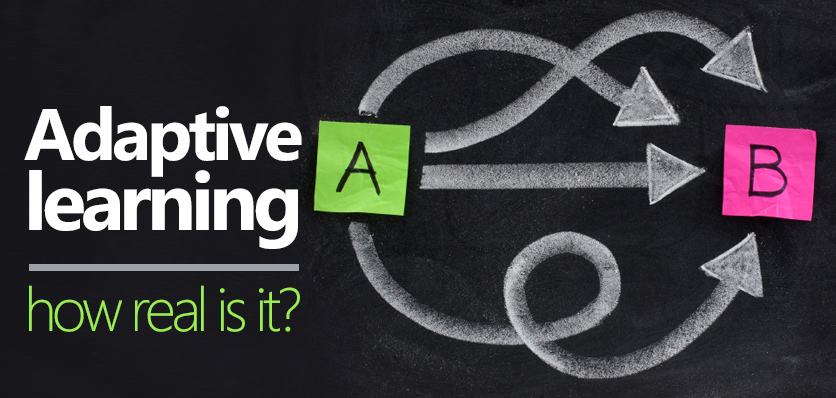Adaptive learning – how real is it?

Adaptive learning is a hot topic. If you’re familiar with it, skip the next few lines. If you’re not, then read on…Hopefully you got the joke. Because that technique is the heart of adaptive learning: your experience changes depending on your ability. Learning becomes more challenging if you’re progressing well, and slows down if you need further assistance.
Sound good? While it undoubtedly has positives, adaptive learning isn’t quite so simple in practice. That’s why we’ve put together two things for you. Firstly a list of its benefits, and secondly a checklist of things to be sure about before trying it.
So what are the benefits?
Adaptive learning is an e-learning-based way to personalize instruction. Its aim: to improve and speed up each student’s progress, by tailoring things as closely to them as possible.
Used for online courses and in blended learning classrooms, adaptive learning takes into account things that can otherwise get lost in a ‘one size fits all’ approach – especially the individual characteristics of each student: motivation, background, culture, language ability, etc.
When learning is targeted like this, then it can – according to research carried out in the USA – stop students dropping out of courses, improve outcomes (and how fast these outcomes can be reached), and enable teachers to focus their attention where it’s most valuable.
Five things to ask yourself
Whether you’re an individual or an institution, let’s assume you’re thinking of buying adaptive learning software (there are dozens on the global market). Here are five questions to ask:
- At what point in the learning process does the software evaluate the student? This might be at the end of a topic: for example, a quiz that either moves them on, or enables them to review the topic. Are you happy with this being the moment at which students are ‘assessed’?
- Does the software really weigh up and take into account the full range of factors you need it to? For example, if you teach in the Gulf region, are allowances made for English-native speakers versus Arabic first/English second speakers? Are the calculations behind this clear and available, or are you being asked to trust a ‘secret’ solution?
- Are you happy to devolve a key part of teaching – judging how a student is doing – to a piece of software? One consequence of adaptive learning is that it can be challenging for a teacher to ‘interrupt’ a student and redirect a specific unit. Instead, the software will be making these ‘stop/go’ decisions for you.
- Will the system be making a truly thorough judgment? Adaptive learning tools need loads of data in order to do a good job of plotting a student’s optimal learning path. You need to be confident that enough data – and enough quality data – is being collected.
- Is adaptive learning right for your subject, and the age of the students you’re teaching? Bear in mind that much of the development work that’s gone into adaptive learning has been focused on mathematics for K-12 students. While this is now being adapted for other subjects (such as science) and other age groups, you need to be certain any solution you buy is right for your needs.
